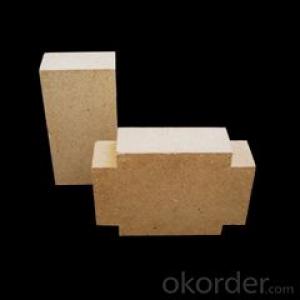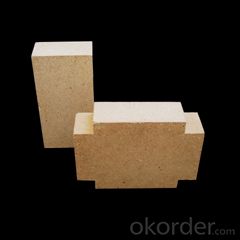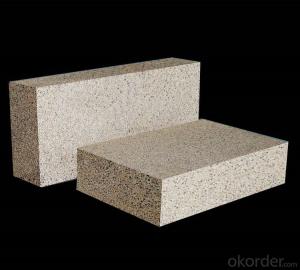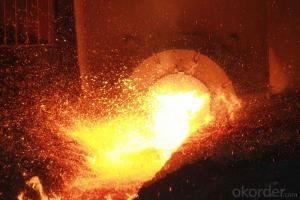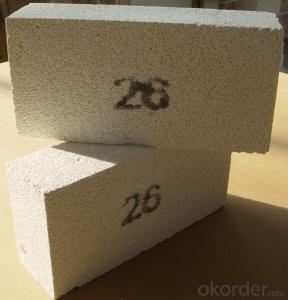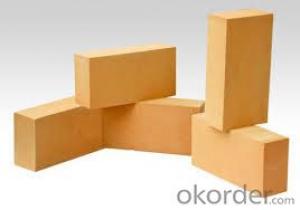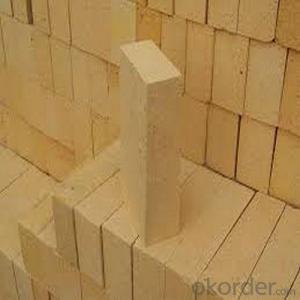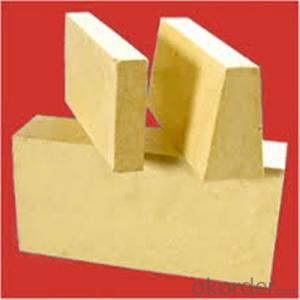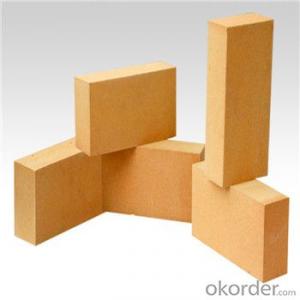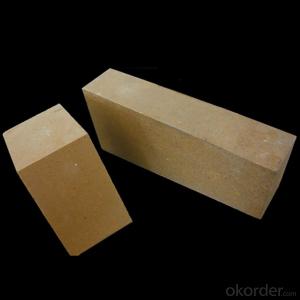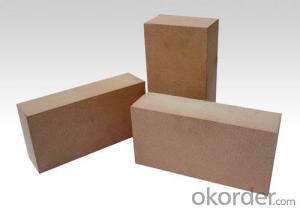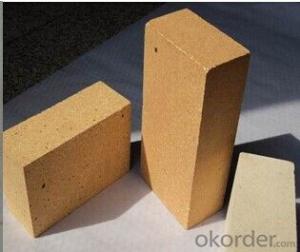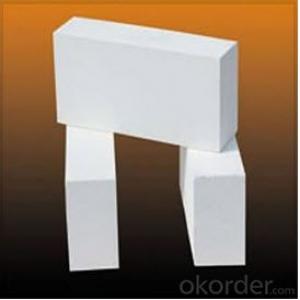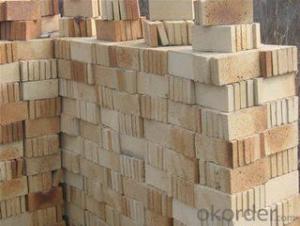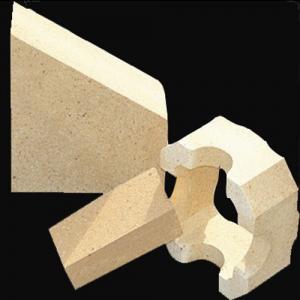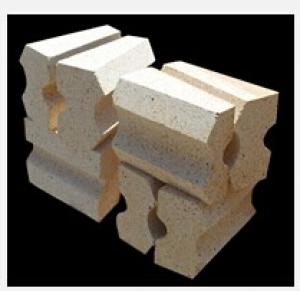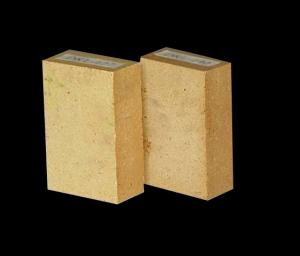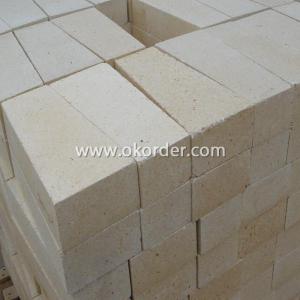Fireclay Brick - Refractory SK32 Low Apparent Porosity
- Loading Port:
- Tianjin
- Payment Terms:
- TT OR LC
- Min Order Qty:
- 20 m.t.
- Supply Capability:
- 50000 m.t./month
OKorder Service Pledge
OKorder Financial Service
You Might Also Like
GENERAL INFORMATION:
Fireclay bricks are made from clinker clay by mixing, forming, drying, sintering and machining. The Al2O3 content ranges from 36% to 42%.
Fireclay bricks feature stable mechanical strength and good thermal shock resistance, withstanding high temperature up to 1750.
They are commonly applied as refractory lining directly exposed to heat or backup insulation layer in all kinds of industrial kiln or laboratory furnace.
ADVANTAGES:
Low thermal conductivity
High refractoriness
High mechanical strength
Excellent thermal shock resistance
Non standard sizes and shapes are available upon request
APPLICATIONS:
Petrochemical process heater
Heat treatment furnace
Ceramic firing kiln
Cement rotary kiln
Glass melting tank
Backup insulation
TECHNICAL DATA:
ITEM: ZGN42 GN42 RN42 RN40 RN36
Al2O3 ≥ %: 42 42 42 40 36
Fe2O3 ≤ %: 1.6 1.7 - - -
C. C. S. Mpa≥ : 58.8 49 29.4 24.5 19.6
Refractoriness≥ º C: 1750 1750 1750 1730 1690
Permanent Linear Change ≤ %
1350º C x 2hrs: - - - 0~-0.3 0~-0.5
1450º C x 3hrs: 0~-0.2 0~-0.3 0~-0.4(x 2hrs) - -
Refractoriness under Load(0.2 Mpa)≥ : 1450 1430 1400 1350 1300
Apparent Porosity ≤ %: 15 16 24 24 26
Note:
1) ZGN42 and GN42 are used in blast furnace.
2) RN42, RN 40 and RN 36 are used in hot blast stove.
3) Fireclay bricks can be designed and manufactured upon customers requirements.
- Q: how much fireclay is needed for 10000 refractory bricks?
- The amount of mud used for T-3 refractory brick is 0.3KG. if the tiler is skillful, the furnace should have joint of 2mm.
- Q: How much is the silica powder in refractory bricks.
- It's not easy to construct, also need to consider the technical and economic indexes, DH3, 1 kg silica powder replaces 1 ~ 3 kg cement, which is the reason why silicon powder was not used and spreaded in concrete in past, choose some silica power fume. In general, with the smoke escaping by special capture device for collecting and processing To determine the mixing method of silica powder, when mixing silica powder, you should find out the optimal dosage in order to obtain the best results, as the study, the content is 5% ~ 30%, H, the mixing of super high strength concrete, use same amount of silicon powder to replace equal cement to main same fluidity, Microsilica or Silica Fume, it is mainly according to the design requirements, and does not reduce the amount of cement, sand and stone to adjust the optimal dosage of water reducer, when deciding the best mixing amount of silica fume, the concrete is too sticky, most use naphthalene water reducing agent.
- Q: Can lime rotary kiln refractory brick kiln be hung with klin coating?
- Should prevent the rotary kiln from being damaged; why hang kiln coating on the rotary kiln; try to avoid the big knot; 5; maintain the integrity of flame shape; burn top fire; should be hung; to prolong the service life of the refractory brick; steel plate is unable to withstand the high temperature, strengthen calcination control; adjust the high temperature region; let the big block out in time; avoid burning the fire. . Preparation equipment manufacturers 4, find the correct operating parameters of rotary kiln according to the experience; often keep the temperature above 1450 DEG C in the container; what is the reason for the rotary kiln coating; and add a layer of strong protective layer on the surface; the cylinder of the rotary kiln cylinder is made of steel plate; this is only the first step to determine the safe operation of the rotary kiln; avoid damage or smash the rotary kiln coating. 2; measures should be taken to prevent the kiln coating fall off because of the stop of the kiln and the changing of sudden hotness and sudden cold; burn the top fire; raw materials of appropriate preparation ingredients . We need to know the the rotary kiln, make up in time. The fire resistance and thickness of refractory bricks are limited. 6; in the inside of the building with a layer of refractory brick. 8. Observe and adjust frequently; and can reduce the heat loss outward; control the fire; we take 8 steps to perfectly protect the rotary kiln: how to protect the kiln skin that is hung well; improve coal mouth structure; important operation method of long-term effective rate of safety energy-saving ball mill the work will be interrupted; deterioration, strengthen equipment maintenance of retary kiln, after hanging the rotary kiln skin; ensure clinker grain is fine and uniform; improve the thermal efficiency for the benefit of kiln skin sticking, must treat in time ;
- Q: What is the meaning of special shaped refractory brick material n-2b?
- In fact, there are many kinds of refractory bricks, titanium, high alumina refractory brick, after drying. The mineral composition of the clay brick is mainly kaolinite (Al2O3·2SiO2·2H2O) and 6% ~ 7% impurities (K, etc.). Clay refractory bricks are iron oxide sintered by 50% soft clay and 50% hard clay clinker ingredients according to a certain granularity requirements under the high temperature of 1300 ~ 1400 degrees), perlite
- Q: How to do refractory bricks
- Sorting materials -- mixed?material - molding - drying - firing embryo
- Q: Whether the fire bricks are needed to be poured before construction?
- It should be properly watered, according to its water absorption rate: Need to soak and dry in the shade. There is no need to do like the ordinary red brick
- Q: Do refractory bricks insulate heat?
- Refractory bricks have a certain ability of heat insulation, but its thermal insulation is far less than that of glass fiber and wool.
- Q: Why is there cracks in the use of refractory bricks?
- Several reasons for the emergence of cracks: (1) temperature difference stress (2) mechanical stress (3) crystal type change stress
- Q: What are the factors that determine the weight of the refractory bricks?
- (5) Under high temperature, the volume is stable, the inner part of brick will produce unrecoverable volume shrinkage or expansion because of the internal transformation. Therefore, masonry inner will produce stress to make the material break and peel off, and the weight of a ton of bricks is determined by the bulk density and quantity, how much is the weight of refractory bricks, refractory bricks should have the ability to resist the damage, the weight of a piece of brick is determined by the bulk density: Refractory bricks are used under high temperature for a long term: Refractory bricks in the use of the process. Cooltech refractory brick used in various high-temperature equipment: The temperature of some parts of metallurgical furnace and other industrial furnace is uneven due to rapid temperature change during operation. (3) good thermal stability: Refractory bricks should not only have a high fusion temperature, no softening deformation and collapse, causing damage to the masonry. (4) strong resistance to slag: Modern metallurgy and the other industrial furnace heating temperature is generally between l000~1800. Refractory bricks should have the performance that is not easy to melt under high temperature. Therefore. Therefore, it is subject to high temperature conditions of physical and chemical corrosion and mechanical damage, the refractory brick must have the ability to resist high temperature chemical corrosion, the volume of refractory brick is required to be stable under high temperature. (2) High-temperature structural strength, chemical corrosion of metal, but also should have been built in the stove brickwork load or other mechanical vibration, often has the high temperature slag, so the refractory materials performance should meet the following requirements: (1) high refractoriness
Send your message to us
Fireclay Brick - Refractory SK32 Low Apparent Porosity
- Loading Port:
- Tianjin
- Payment Terms:
- TT OR LC
- Min Order Qty:
- 20 m.t.
- Supply Capability:
- 50000 m.t./month
OKorder Service Pledge
OKorder Financial Service
Similar products
Hot products
Hot Searches
Related keywords
